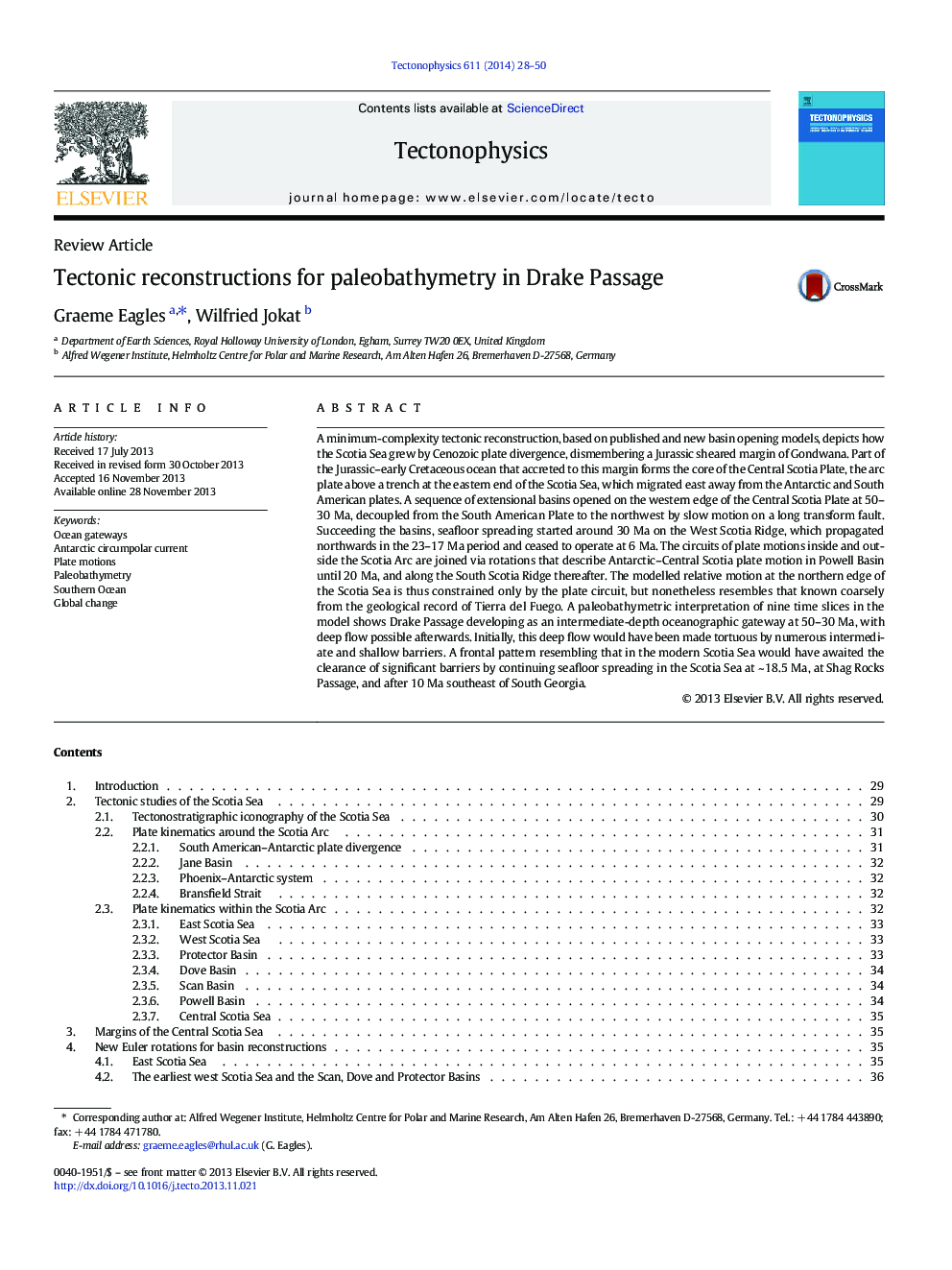| کد مقاله | کد نشریه | سال انتشار | مقاله انگلیسی | نسخه تمام متن |
|---|---|---|---|---|
| 4692108 | 1636776 | 2014 | 23 صفحه PDF | دانلود رایگان |
• Synthesis of Scotia Sea basin opening models
• Reconstructions using bathymetric data in 9 time slices
• Cenozoic basins and transforms dismembered older sheared Gondwana margin.
• Rotation model predictions consistent with Tierra del Fuego geological record
• Intermediate oceanographic flow possible since 50 Ma, deep since 30 Ma
A minimum-complexity tectonic reconstruction, based on published and new basin opening models, depicts how the Scotia Sea grew by Cenozoic plate divergence, dismembering a Jurassic sheared margin of Gondwana. Part of the Jurassic–early Cretaceous ocean that accreted to this margin forms the core of the Central Scotia Plate, the arc plate above a trench at the eastern end of the Scotia Sea, which migrated east away from the Antarctic and South American plates. A sequence of extensional basins opened on the western edge of the Central Scotia Plate at 50–30 Ma, decoupled from the South American Plate to the northwest by slow motion on a long transform fault. Succeeding the basins, seafloor spreading started around 30 Ma on the West Scotia Ridge, which propagated northwards in the 23–17 Ma period and ceased to operate at 6 Ma. The circuits of plate motions inside and outside the Scotia Arc are joined via rotations that describe Antarctic–Central Scotia plate motion in Powell Basin until 20 Ma, and along the South Scotia Ridge thereafter. The modelled relative motion at the northern edge of the Scotia Sea is thus constrained only by the plate circuit, but nonetheless resembles that known coarsely from the geological record of Tierra del Fuego. A paleobathymetric interpretation of nine time slices in the model shows Drake Passage developing as an intermediate-depth oceanographic gateway at 50–30 Ma, with deep flow possible afterwards. Initially, this deep flow would have been made tortuous by numerous intermediate and shallow barriers. A frontal pattern resembling that in the modern Scotia Sea would have awaited the clearance of significant barriers by continuing seafloor spreading in the Scotia Sea at ~ 18.5 Ma, at Shag Rocks Passage, and after 10 Ma southeast of South Georgia.
Figure optionsDownload as PowerPoint slide
Journal: Tectonophysics - Volume 611, 25 January 2014, Pages 28–50
